The holiday season is here, and with it comes a whole lot of gift-worthy books, as well as — if you don’t have kids — plenty of time to do some reading. This final Film Stage books column of 2021 features a diverse mix of glossy making-ofs, some career retrospectives, and much more.
One sad note that I neglected to mention in my last two columns: J.W. Rinzler, author of the definitive making-of books about the original Star Wars trilogy, passed away on July 28. He set the standard for detailed, ever-readable studies of how some of our favorite films came to be; this column most recently featured his work in November 2020, when reviewing The Making of Aliens. As we move into a new year, it seems fitting to recognize the writing of a man whose behind-the-scenes accounts were often as memorable and noteworthy as the films themselves. (Read more about Rinzler on starwars.com.)
David Fincher: Mind Games by Adam Nayman (Abrams)
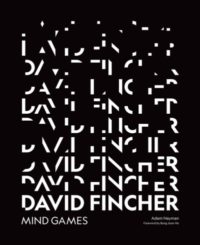
“The films of David Fincher are filled with dangerous games and apex predators,” writes Adam Nayman at the start of Mind Games. “It’s there, in the space between focus and understanding—between metaphysical mystery and high-definition clarity, between control and its limits—that David Fincher invites us to play mind games.” Following his masterful, colorful examinations of the Coen Brothers and Paul Thomas Anderson, Nayman has unleashed another gem, one as probing and wise as Fincher himself. Mind Games features a lovely foreword by Bong Joon-ho before diving into the deep end of all things Fincher—music videos, commercials, TV work, and every feature from Alien 3 to Mank. For me, reading Mind Games was a deeply personal, even eye-opening experience. Example: Nayman has caused me to rethink my long-simmering upset that Fincher was unable to revisit Lisbeth Salander in a sequel to The Girl With the Dragon Tattoo. As Nayman puts it, Tattoo’s “incredibly sharp, abrupt fade-out” may have been designed to be continued, but gains greater power by remaining our final moment with Fincher and Rooney Mara’s Lisbeth: “A case can be made that this was the best possible outcome not only for Fincher, no longer bound to a franchise likely to bring diminishing returns, but for the film, which paradoxically gains a certain standalone integrity for remaining so open-ended.” Hopefully the latter example demonstrates this is the book Fincher-ites have been wanting for years. It was worth the wait.
The Art and Soul of Dune by Tanya Lapointe (Insight Editions)
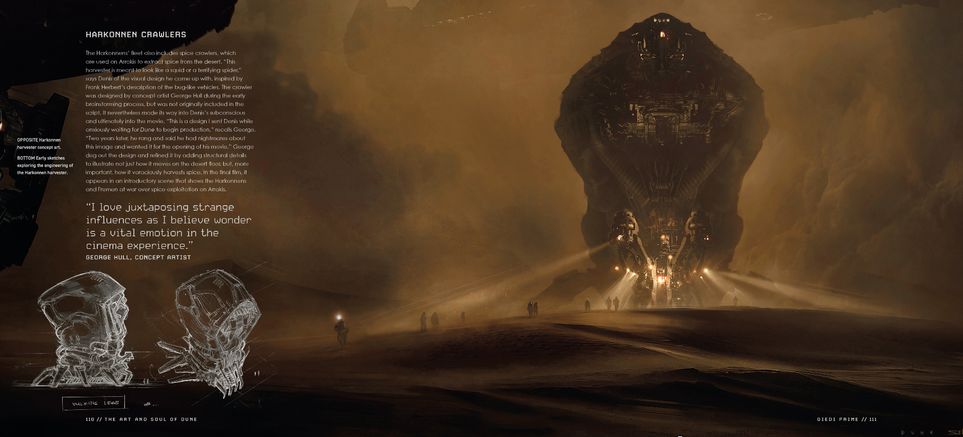
Denis Villeneuve’s adaptation of Frank Herbert’s Dune may have banked less box office cash than it would have pre-COVID, and minus HBO Max availability. However, the film still qualifies as a cultural phenomenon, and a terrifically entertaining (and extremely faithful) take on the first novel in the series. It more than warrants executive producer Tanya Lapointe’s The Art and Soul of Dune. It is large-scale, bursting with set photos and designs, and boasting some insightful thoughts from Villeneuve and his team. (“During their conversations, Eric [Roth] asked Denis what single word reflected his vision for the movie. Denis answered, ‘Women.’”) The Art and Soul is an ideal companion for the Atreides-obsessed viewer, and as strong a book as Lapointe’s earlier looks at Arrival and Blade Runner 2049. A follow-up book upon the release of Dune: Part II should be just as enticing. (Note that Insight Editions also released a pricey but stellar limited edition version of the book.)
SPIKE by Spike Lee (Chronicle Chroma)
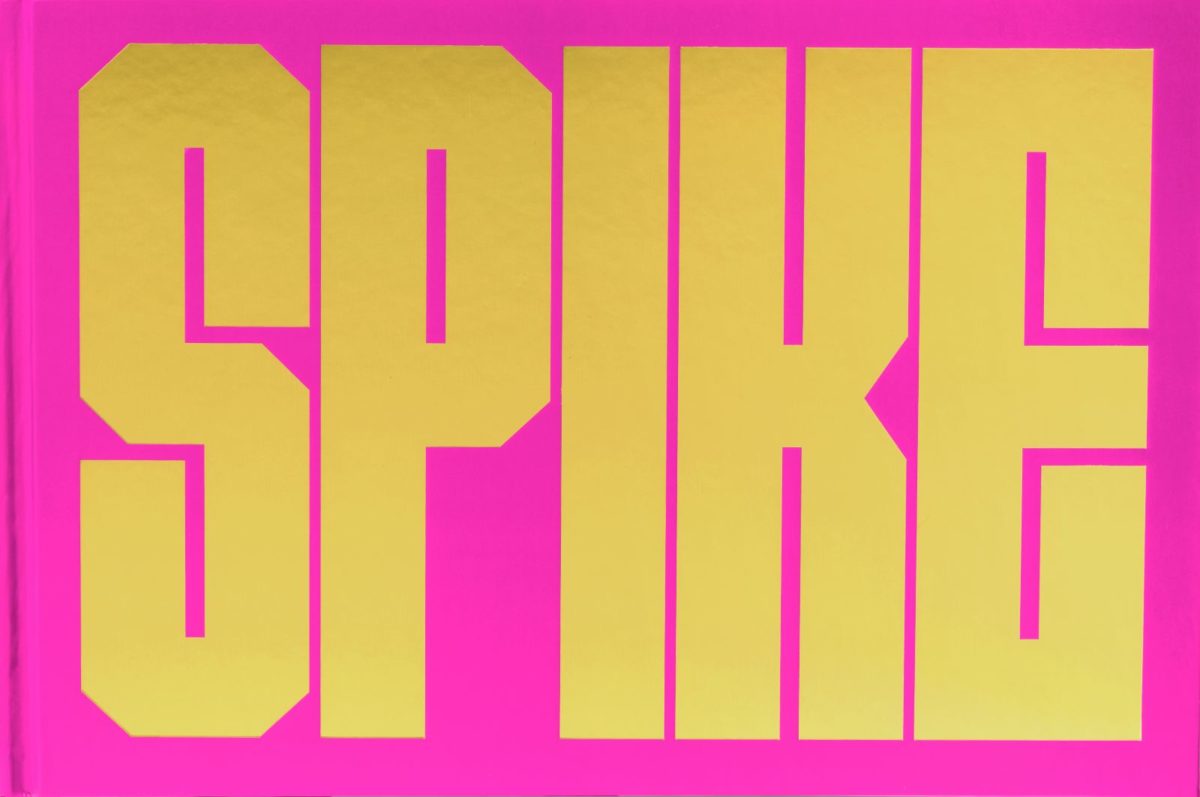
While a Spike Lee memoir would certainly be desirable, a photo-packed hardcover book seems even more fitting. After all, there are few filmmakers whose work packs as seismic a visual punch. From the front cover—“SPIKE” fills the space in gold lettering, against a hot pink background—to the final page, Chronicle Chroma’s SPIKE is a big, bold powerhouse. Each Lee film is presented with a few quotes from the director followed by behind-the-scenes photos and still, many of them featuring additional comments from Lee. The most tantalizing tidbit here is, rather unexpectedly, a single line preceding the section exploring one of Lee’s most-maligned works, 2013’s Oldboy: “One Day, Hopefully, My Version Of Oldboy Will See The Light Of Day.” The existence of a much-lengthier cut has been discussed before, but this new mention from the director himself should serve to cause some additional conversation.
For Promotional Use Only: A Catalog of Hollywood Movie Swag and Promo Merch from 1975-2005 (A24)

It was only a matter of time before an A24 product found its way into this column, and For Promotional Use Only is a fine way to start. It is a deliriously fun and often very funny visual extravaganza devoted to, yes, movie swag. We’re talking a Cop and a ½ backpack, a Twister necktie, a Crocodile Dundee II pool float, an Eraserhead cutout mask, and—my personal favorite—Being John Malkovich Russian dolls. Plus, the book includes a foreword by Roger Corman, an insightful essay by Lindsay Zoladz, and even an oral history from “the veteran merch makers.” The only downside? No Remains of the Day lunchbox. Happily, the Quigley Down Under paperweight more than makes up for it.
No Time to Die: The Making of the Film by Mark Salisbury (Titan Books)
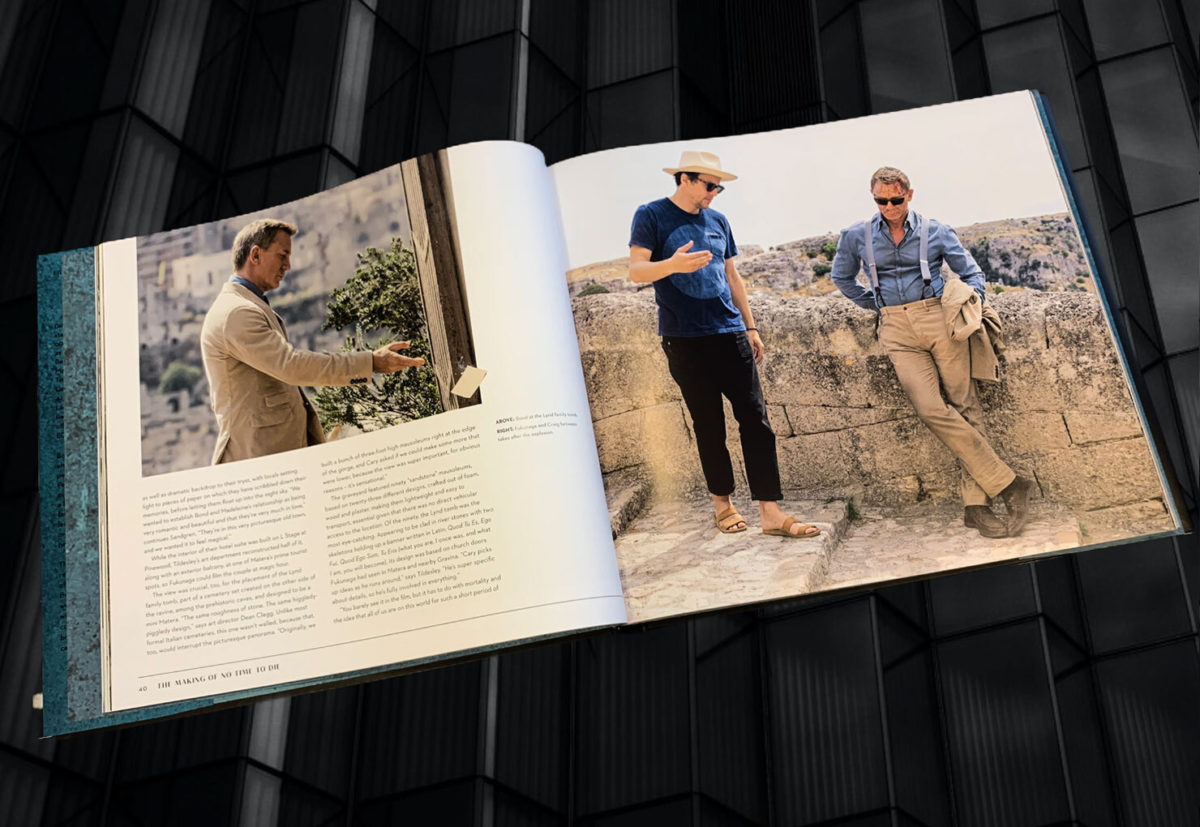
It took longer for the 25th entry in the James Bond series to make it to cinemas than anyone could have guessed pre-COVID, but for this fan, No Time to Die was a worthy entry. Whatever one’s opinion of this final outing for star Daniel Craig, No Time to Die: The Making of the Film should provide some nuggets of interest. Author Mark Salisbury breaks down the aborted Danny Boyle take on the film, explains director Cary Fukunaga’s approach to the story, and runs through the film’s planning and production. Especially interesting is the filmmakers’ thoughts on the — SPOILER ALERT — controversial ending. “[I]t felt like the that was the fitting conclusion to the Daniel Craig arc,” says producer Barbara Broccoli, “that we would have to out him in the worst, the most unthinkable situation he could ever possibly be put in, which is facing a threat to the people he loves and him having to make the choice whether he saves the world or saves those individuals. I think it’s a fitting conclusion to his extraordinary run as this character.” Quite frankly, this is the type of book one would have loved to have seen released after each Bond movie.
Once Upon a Time in Hollywood: A Novel (Deluxe Edition) by Quentin Tarantino (Harper)
Quentin Tarantino’s novelization of Once Upon a Time in Hollywood, which we covered in our column in July, is the definition of the cinephile must-read. The release of a new deluxe edition, then, featuring gorgeous glossy images and posters, a Bounty Law script, and more, is certainly noteworthy. However, it begs the question, if you already purchased the paperback edition, is this deluxe version worth picking up? I lean toward a “yes.” The new extras—especially the Mad magazine parody of Bounty Law—are a treat. And the color pics of Rick Dalton ephemera are certainly fun. For a Tarantino die-hard, those elements alone might warrant the buy.

In other QT news, Tarantino: A Retrospective: Revised and Expanded Edition (Insight Editions) by Tom Shone is a rerelease of the 2017 book with a new chapter dedicated to Hollywood. New writing from Shone is always noteworthy, and the look of Retrospective is big and bold. And the text from the original edition of the book remains exceptional. (Shone on Four Rooms: “The film played for a few weeks, then quickly disappeared, its flimsy contrivance unable to withstand the weight of expectation resting on the filmmaker post-Pulp Fiction, in addition to the countervailing forces of backlash now in session against him. Tarantonian. They weren’t reviewing him so much as his reputation.”)
Solid Ivory: Memoirs by James Ivory (Farrar, Straus and Giroux)
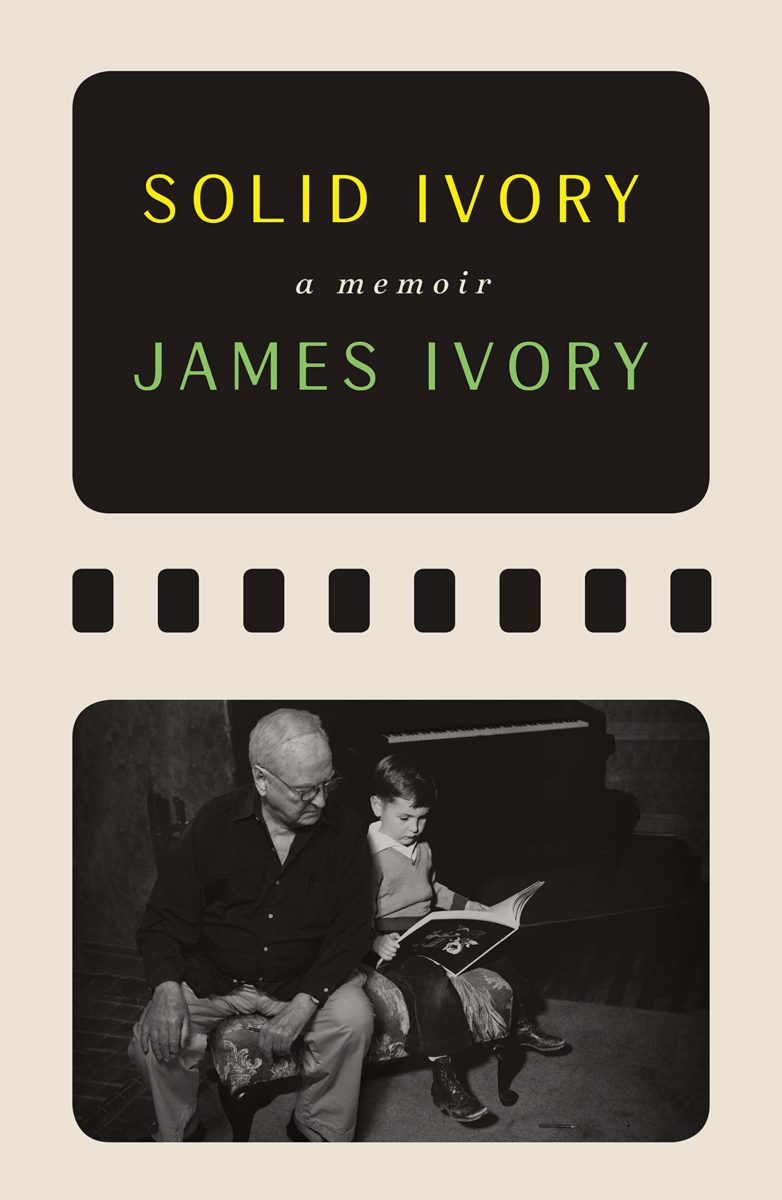
This radically structured, deeply moving memoir from James Ivory—who, as partner in Merchant Ivory Productions directed classics like A Room With a View, Howard’s End, and The Remains of the Day—has already made headlines. This is due to the section documenting how Ivory came to be “dropped,” as he puts it, from co-directing Call Me By Your Name with director Luca Guadagnino. Ivory writes: “[W]hy hadn’t Luca himself picked up the telephone to speak to the person he was dropping? It was a pattern, and by then I should have understood.” Ivory goes on to explain, in painful detail, what transpired. It is fascinating stuff, but only one highlight in a book that is positively enthralling. From his childhood and burgeoning sexuality as a young man to his filmmaking partnership with Ismail Merchant, Solid Ivory is a genuine delight. It is certainly one of the most notable film memoirs of 2021.
The Florida Project by J.J. Murphy (University of Texas Press)
The 21st Century Film Essentials series from University of Texas Press is fast becoming, well, essential. The latest release, J.J. Murphy’s extensive exploration of The Florida Project, is a marvelous guide to the making and understanding of an important film. Sean Baker’s Florida is a strong choice for such a take. Murphy recounts how the film started with an idea from co-screenwriter Chris Bergoch, where the title came from (Bergoch, in an email to Baker: “When Walt Disney was keeping his plans for [Walt Disney World] under wraps, way before it opened in 1971, its code name was ‘The Florida Project’ … so that’s what I will refer to this project as from now on”), and how the film’s extraordinary cast of mostly unknowns was discovered. Rarely has a recent independent success been so meticulously and entertainingly explored.
Jurassic Park: The Ultimate Visual History by James Mottram (Insight Editions)
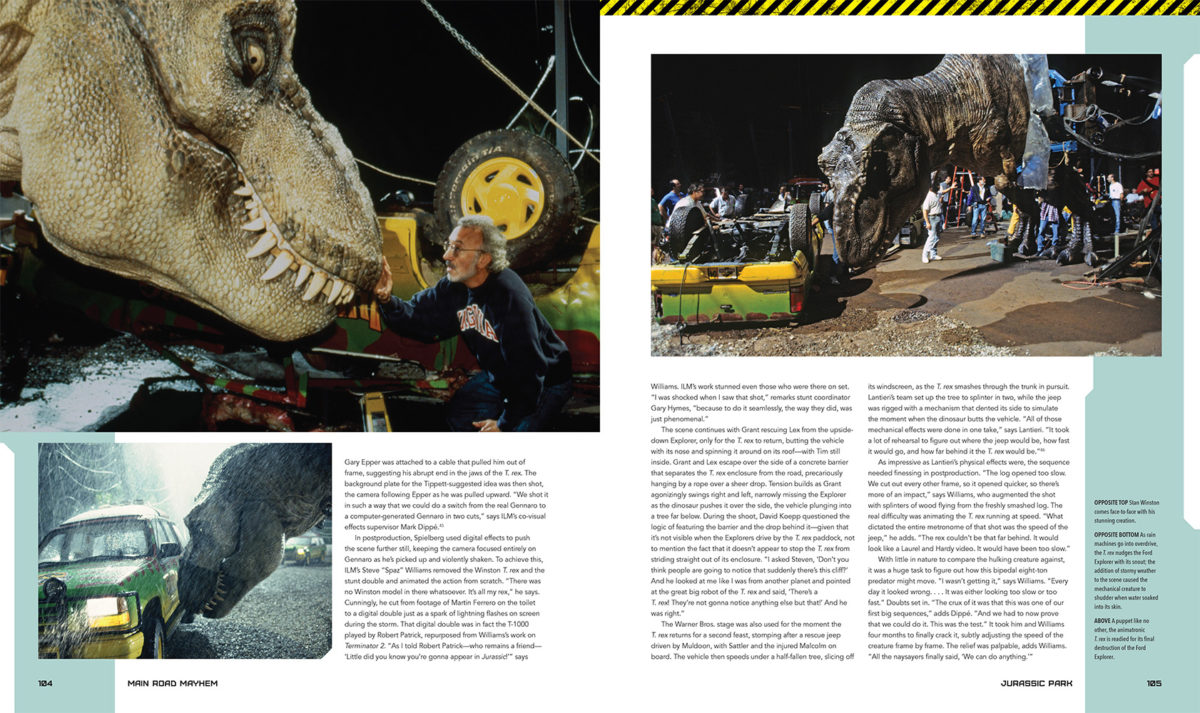
Back in June 1993, a 13-year-old me picked up a book titled The Making of Jurassic Park, and found it to be a pretty comprehensive read. Nearly 30 years later comes an even more comprehensive read, Jurassic Park: The Ultimate Visual History. It is, to be sure, the most detailed and in-depth look to date at Steven Spielberg’s original and the Park and Jurassic World films that followed. Of greatest interest is perhaps the account of how Spielberg came to be the director of the Michael Crichton adaptation, how he assembled a team of visual effects masters, and how the script and cast came together. (You have to love James Cameron’s memory of reading Crichton’s soon-to-be-released book: “I said, ‘I’ve got to make this movie.’ I never even finished the book. I called up [and was told], ‘Steven just bought it.’”) Visual History also touches on Jurassic offshoots—toys, video games, comic books—and features fun bits of fakery, such as the front and back cover of Dr. Alan Grant’s bestseller, Dinosaur Detectives, and a frame of “Mr. DNA” animation.
Guillermo del Toro by Ian Nathan (White Lion Publishing)
“del Toro is a Fu Manchu,” writes Ian Nathan in his “unofficial and unauthorized” study of director Guillermo del Toro. “He takes empty rooms and transforms them into devious traps. He does the unexpected.” Nathan’s book might not do the unexpected, but it succeeds in identifying the themes, idiosyncrasies, and delights of all of del Toro’s films, from Cronos to The Shape of Water. There is even a section analyzing how the upcoming Nightmare Alley connects with the director’s other works. “[T]here is a striking parallel between the elaborate tricks executed by [conman Stanton Carlisle] to fool his congregants and filmmaking itself, which essentially uses a sophisticated sleight-of-hand to dupe an audience into belief.” The writing here is energetic and colorful, just like the book’s subject.
The 30 Rock Book by Mike Roe (Abrams Press)
The farther away we get from the finale of NBC’s 30 Rock in 2013, the more remarkable the show seems. As The 30 Rock Book explains, this was a network sitcom bursting with “hyper-specific jokes … one- or two-percenters—the jokes that will only work for 1 or 2 percent of the people out there, but for that audience, the jokes really work.” Indeed, that analysis gets to the heart of TIna Fey’s beloved series. That audience will find much to enjoy in Mike Roe’s book, which features oodles of quotes from many of the key figures involved. Especially intriguing is the (hilarious, in hindsight) competition between 30 Rock and Aaron Sorkin’s ultimately doomed Studio 60 on the Sunset Strip when both series premiered in 2006: “Studio 60’s sketches weren’t so-bad-they’re-funny like 30 Rock did with its intentionally bad sketches that were seen in brief glances. Instead, Studio 60’s attempts at sketch comedy were in a muddy middle ground.”
The Simulated Multiverse: An MIT Computer Scientist Explores Parallel Universes, The Simulation Hypothesis, Quantum Computing and the Mandela Effect by Rizwan Virk (Bayview Books)
We are just weeks away from the long-awaited release of The Matrix Revolutions, and with that comes another cultural discussion of parallel universes and alternate timelines. Anyone with an interest in these topics should pick up The Simulated Multiverse by Rizwan Virk, a head-spinning study of multiverses, philosophy, video games, and the Mandela Effect. The follow-up to Virk’s bestselling The Simulation Hypothesis, his Multiverse also touches on films like The Thirteenth Floor and, unexpectedly, 1998 rom-com Sliding Doors: “[W]e find a vivid example of multiple timelines that branch out and then merge again. When branched, it’s as if the two branches are occupying the same time, and each protagonist (or rather, each version of the protagonist, played by Gwyneth Paltrow) sees the versions of the other characters and sense that something else may be going on.”
Gift-worthy studies of the American Genre Film Archive, Black films, 20th Century Fox, test screenings, Christmas movies and shows to binge

Yes, film-related books can be perfect presents, especially the selections mentioned here. Let’s start with Warped and Faded: Weird Wednesday and the Birth of the American Genre Film Archive (Mondo) by Lars Nilsen, an enthralling examination of how the Alamo Drafthouse in Austin, Texas, sparked the creation of the American Genre Film Archive. In addition to that history, Nilsen breaks down wild and wooly “Weird Wednesday” picks like All the Sins of Sodom and Pink Garter Gang. (“Without a doubt the rarest biker movie we’ve ever played,” Nilsen writes.) This is an epic and essential book. Another essential new entry is Colorization: One Hundred Years of Black Films in a White World (Knopf) by Wil Haygood. This enthralling and impeccably researched study starts with the silent era and ends with the death of George Floyd. “In the life of Black Americans,” Haygood writes, “photographs and moving images would come to be quite significant, illustrating both hardship and brutality.” In addition to documenting the key texts, Haygood also delves into the stories of individuals like Dorothy Dandridge and Melvin Van Peebles. It’s a bit sad to read 20th Century-Fox: Darryl F. Zanuck and the Creation of the Modern Film Studio (Running Press) by Scott Eyman and realize the venerable studio is, in a manner of speaking, no more. After all, Eyman does a remarkable job of explaining the importance of the studio and, especially, longtime figurehead Darryl F. Zanuck. The author finds that the final release before its name changed, Ford vs. Ferrari, had “quality writing, sensitive direction, technical excellence … It was a movie Darryl Zanuck—or Alan Ladd Jr.—would have made in a heartbeat.” Audience-ology: How Moviegoers Shape the Films We Love (Tiller Press) by Kevin Goetz with Darlene Hayman explores the strange world of test screenings from a first-hand perspective: Goetz has run a movie research firm for more than three decades. There are some great stories—shockingly, Moonstruck did not test well—and cogent analysis. I’ll Be Home for Christmas Movies: The Deck the Hallmark Podcast’s Guide to Your Holiday TV Obsessions (Running Press) by Brandon Gray, Daniel Pandolph, and Daniel Thompson is a droll “unofficial fan guide” to Hallmark Holiday Movies. The authors’ opinions on the films are a treat: “What’s actually great about this movie is nothing.” Lastly, Rotten Tomatoes: The Ultimate Binge Guide: 296 Must-See Shows That Changed the Way We Watch TV (Running Press) is a useful and entertaining reminder of the greatness of shows like Columbo and Get Smart and also offers compelling reasons to check out newer series like Dark and The Returned.
Noteworthy memoirs and biographies: Maltin, Hepburn, Puppetmaster, and the brothers Mankiewicz
In addition to the memoirs and biographies already mentioned are a number of recommended books documenting the lives of critics, actors, filmmakers, and writers. OK, one critic: the influential and iconic Leonard Maltin. Starstruck: My Unlikely Road to Hollywood (GoodKnight Books) is as likable and modest as the man himself. Make no mistake, Maltin’s impact is vast. For aging (sigh) reviewers like myself, his movie guides were essential. Reading how Maltin and his wife, Alice, pieced together the early guides is wonderful: “Our dining room table became a workspace. We cut up a copy of the existing book and glued each review to a separate piece of paper.” The book also spends time on Maltin’s friendships with the likes of James Stewart and a feud (!) with Burt Reynolds. Another fun memoir is Confessions of a Puppetmaster: A Hollywood Memoir of Ghouls, Guts, and Gonzo Filmmaking (William Morrow) by Charles Band with Adam Felber. Band is a B-movie legend, and this colorful book documents his approach to what he calls “exploitation movies … What’s being exploited is an opportunity, a cultural or historical moment.” Case in point: his 2020 release Corona Zombies. Two rather somber recent biographies are Oscar Wilde: A Life (Knopf) by Matthew Sturgis and Warrior: Audrey Hepburn (GoodKnight Books) by Robert Matzen. Wilde is a stunningly comprehensive account of its subject’s celebrated but controversial life. As expected, the pages describing his entanglement with Lord Alfred Douglas and imprisonment are riveting. Warrior explores Hepburn’s humanitarian efforts in great detail, providing a real understanding of what drove her passion for helping others. And while there have been a number of fine books on the Mankiewicz brothers—to say nothing of David Fincher’s Mank—Competing With Idiots: Herman and Joe Mankiewicz, A Dual Portrait (Knopf) by Nick Davis is a welcome release. While the life of Herman Mankiewicz feels a bit familiar at this point, the directorial career of his brother, Joe, captivates. It is fascinating to learn that he was offered All the President’s Men; Davis explains that Joe met a number of times with Robert Redford, “each time asking more and more questions that were so baffling to Redford that he finally moved on to Alan J. Pakula.”
Beatles, Stones, or both?
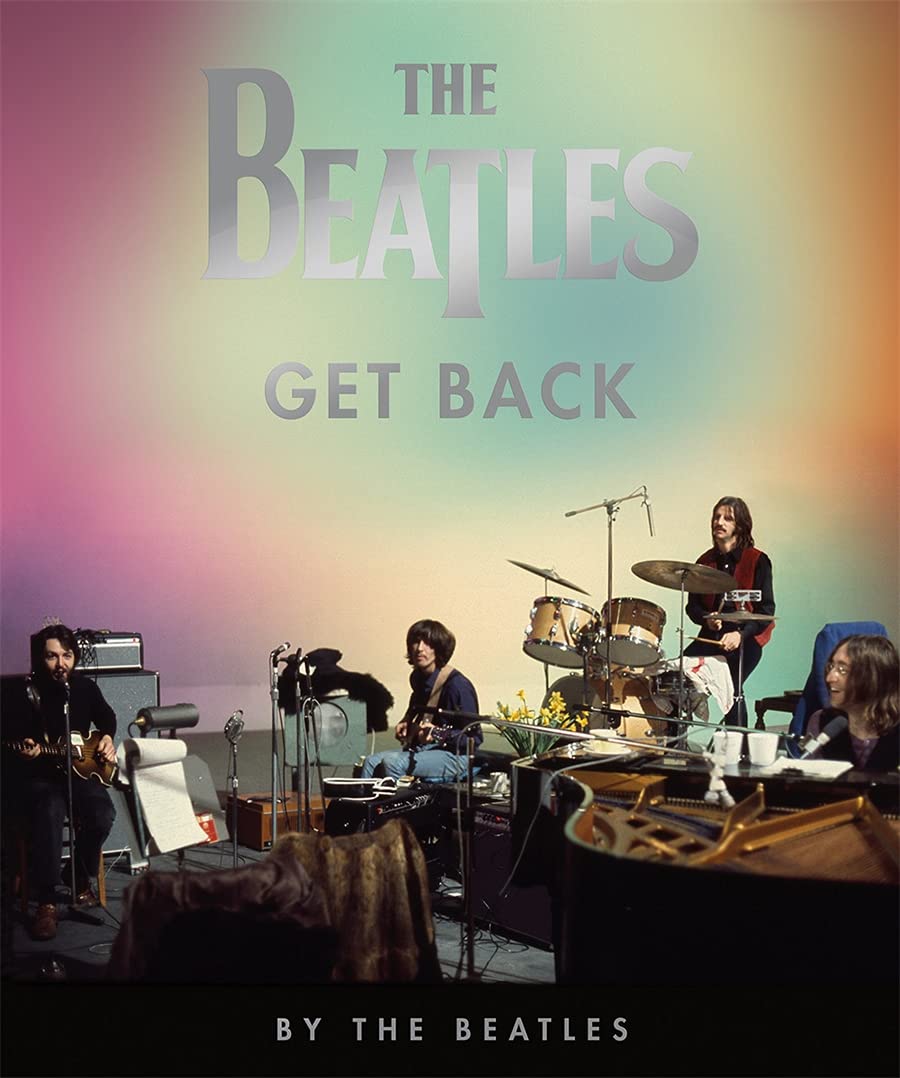
As Liam Gallagher sang in a 2011 Beady Eye stomper, “I’m gonna stand the test of time / Like Beatles and Stones.” Indeed, no band has stood the test of time quite like the Beatles and the Rolling Stones. And two charming new books showcase some of the reasons why. Peter Jackson’s Disney+ documentary on the creation of the Beatles’ Let It Be is one of 2021’s most eagerly-anticipated releases, and if the book version, The Beatles: Get Back (Callaway Arts & Entertainment), is any indication, the film should be extraordinary. It should also serve as a rebuttal to many of the myths surrounding the band’s final years. Consider the words of Paul McCartney on January 13, 1969: “It’s going to be such an incredible sort of comical thing like, in fifty years’ time, you know: ‘They broke up ’cos Yoko sat on an amp,’ you know [laughs].” The book also features a wonderful introduction from Buddha of Suburbia author Hanif Kureishi. Meanwhile, The Rolling Stones: Unzipped (Thames & Hudson) is the latest in a literal library of books about the Stones. The approach this time is documentation of the band’s impact via photos, memorabilia, outfits, commentary from the band, and words from folks like “Gimme Shelter”’s No. 1 fan, Martin Scorsese. Here, Scorsese discusses Jean-Luc Godard’s infamous Stones doc, Sympathy for the Devil: “It’s not an easy picture to sit through, but it’s a period piece. Maybe a better way of saying it is, it’s an artifact.” Unzipped is another artifact, and a greatly enjoyable one.
New music books, from Prince and Led Zep to Wu-Tang and Little Steven
In addition to the Beatles and Stones books mentioned above are several other noteworthy recent music releases. One of the most readable music bios in years is Led Zeppelin: The Biography (Penguin Press) by Bob Spitz. It is an epic tale, as one would expect from a band of combustible individuals with lives touched by chaos and tragedy. It is difficult to pick a favorite moment, but Spitz’s description of the disastrous Live Aid reunion in 1985 ranks near the top: “[The performance’s drummer] Phil Collins, flailing away, couldn’t keep proper time. He’d been sent a tape of the material but hadn’t had a chance to practice it.” Many of Led Zeppelin’s most harrowing moments resonate most, and the same is true of Nothing Compares 2 U: An Oral History of Prince (Permuted Press) by Touré. Prince comes off as a relentlessly driven genius, but also as an ultimately sad individual. The book’s final section, featuring memories of his last days, is heartbreaking. As Morris Day puts it, “I think he used the drug so he could work and the feel-good part took over. He didn’t realize what he was up against.” Stevie Van Zandt’s Unrequited Infatuations: A Memoir (Hachette Books) is a much more joyful affair, befitting the personality of the man also known as Little Steven and Silvio Dante. From his youth to his days in the E-Street Band, his activism, his acting, and his role as godfather of the Underground Garage, Van Zandt has lived a life less ordinary. Unrequited Infatuations is a gem, just like its author. (The author on Little Steven’s Underground Garage Festival, a 2004 music fest featuring the Strokes and the New York Dolls: “Making history can be an expensive hobby, but what a glorious disaster!”) Lastly, From the Streets of Shaolin: The Wu-Tang Saga (Hachette Books) by S.H. Fernando takes a cinematic approach to the story of RZA, Ol’ Dirty Bastard, Method Man, and company. It’s a larger-than-life affair, just like its subjects: “Twenty-five years and counting, Wu-Tang remains a work in progress, their final chapter yet to be written, as the saga continues.”
You know, for kids:
While I am referring to the books (and more) listed here as “for kids,” they will likely appeal to adults, as well—especially The Secrets of LEGO House (Chronicle Books) by Jesús Díaz. It is a thoroughly engrossing visit to LEGO House in Billund, Denmark, the “home of the brick” that must be seen to be believed. LEGO House “could be pivotal to a child’s life path,” Díaz writes. “The best part would be if kids came back in twenty years and told them that they made a decision to be an engineer or an architect because they learned something about themselves at LEGO House.” The DC Book (DK) is really for audiences of any age, but seems most useful for readers still learning the ins and outs of what the book calls “the immense, intertwined DC universe (or more accurately, Multiverses and Omniverse).” The latest two Artifacts from the Wizarding World books from Insight Editions, Harry Potter: Ravenclaw Magic and Harry Potter: Hufflepuff Magic, are bursting with pens, buttons, and other assorted collectibles. And some of the most popular items in my house over the last few weeks are a series of advent calendars from Insight Editions. Yes, my kids did not save them for December. But they still had a killer time discovering the wee keepsakes in the Star Wars: The Galactic Advent Calendar, Harry Potter: Holiday Magic: The Official Advent Calendar, Marvel: The Official Advent Calendar, The Nightmare Before Christmas: Official Advent Calendar of Ghoulish Delights, The Official Batman Advent Calendar, and the Disney Princess: Enchanted Christmas Official Pop-up Advent Calendar. The latter even made a 13-inch pop-up Christmas tree that now adorns my daughter’s dresser.
New or reissued novels (and one memoir) that were recently adapted—or should be adapted soon:
If ever there is a time to catch up on reading, it is during the holidays. And if you are a film obsessive, there is a good chance that nearly everything you read—fiction or non—has some link to the world of cinema. This could mean it is a novel that was recently adapted or is on the way, or is likely to be on the way soon. Or, it could be the latest from an author whose previous work has been brought to the small screen, to great acclaim. The latter is Sally Rooney, whose Normal People was turned into a massive worldwide hit. Rooney’s latest, Beautiful World, Where Are You (Farrar, Straus and Giroux), centered around four main characters (including a celebrity novelist), might be her best work to date. Perhaps the most high-profile novel release of the fall was Jonathan Franzen’s Crossroads (Farrar, Straus and Giroux). This was a rare example of a new novel from a major author that more than lived up to the hype; indeed, for this reader, Crossroads ranks as Franzen’s best since The Corrections. The story of a couple with a failing marriage and their four children in the early 1970s deserves the limited series treatment. (So did The Corrections, but that’s another story.) The Family (Puntam) by Naomi Krupitsky is the gripping mob story we had all hoped The Many Saints of Newark might be. This story of two Italian-American friends born into Mafia families features two juicy female lead roles; someone needs to get a copy of this novel into the hands of Lorene Scafaria, ASAP.
The realm of recently adapted and newly reissued novels includes Nancy Mitford’s The Pursuit of Love (Vintage), a sweet and funny pre-World War II-set look at a privileged British family; Emily Mortimer directed a series adaptation streaming on Prime Video. The Epix series Chappelwaite, starring Adrien Brody, ran from August to October. It was based on “Jerusalem’s Lot,” a 19th-century set short story found in Stephen King’s Night Shift (Anchor). The book also features previously adapted stories like “Children of the Corn” and “The Lawnmower Man.” (Don’t hold those against it.) The Apple TV adaptation of Isaac Asimov’s Foundation trilogy (Everyman’s Library) is proving how difficult it is to properly mount a science fiction saga spanning thousands of years. More successful is Eva Husson’s film version of Mothering Sunday (Vintage) by Graham Swift. While the book is far more compelling, the story of the romance between a maid and the dashing heir to an estate is still worth watching thanks to swoon-worthy performances from Odessa Young and Josh O’Connor. HBO Max’s 10-episode adaptation of Station Eleven (Vintage) by Emily St. John Mandel premieres in December. If the trailer is any indication, the series appears to have captured the haunting tone of this prescient novel about survivors of a pandemic; note that this column covered the author’s latest, The Glass Hotel, in July. Ryusuke Hamaguchi’s Drive My Car is one of the finest films of 2021, and reading the story of the same name in Haruki Murakami’s 2017 short story collection, Men Without Women (Vintage), makes for a fascinating comparison. Murakami’s story is equally devastating, as are the other tales in this bestseller from the world’s greatest living author.
Two new Star Wars novels expand on the characters we know and love in unique ways. Star Wars: Ronin: A Visions Novel (Del Rey), a unique spin-off from the Star Wars: Visions Disney+ series written by Emma Mieko Candon, melds Japanese culture and history with a tale of the Jedi and the Sith. And the final novel in Timothy Zahn’s Thrawn Ascendancy trilogy, Lesser Evil, is a long (more than 500 pages) but always involving conclusion that shows how the blue-skinned Thrawn moved down the path to villainy.
We still have some time to wait for Hayao Miyazaki’s return to the screen (!), an adaptation of the beloved Japanese classic How Do You Live? (Algonquin Young Readers) by Genzaburō Yoshino. This is the first English edition of this wondrous coming-of-age novel for young readers, and it is likely to draw renewed worldwide attention. And lastly, it is hard to think of a series more eagerly-awaited than Michael Mann’s Tokyo Vice (despite the presence of Ansel Elgort). To prep for this HBO Max crime drama, reading Jake Adelstein’s 2009 memoir (Vintage) about his time as an American reporter on the violent crime beat in Japan is highly recommended. Michael Mann will thank you.
